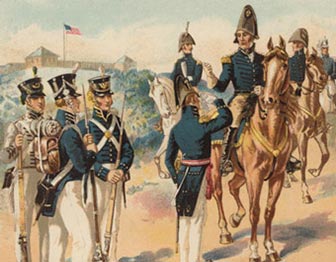The vote to declare war in 1812 was the closest in American history—and the decision had consequences that reached far beyond the halls of Congress. For those in positions of political or economic power, the conflict might have appeared straightforward, involving trading rights, territorial boundaries, and political power. For many others, however, the conflict was far more ambiguous. The outbreak of war forced individuals, groups, and nations to declare allegiances, form alliances, and reaffirm loyalties.
What the war would mean, and what was at stake in its outcome, was very different for different groups caught up in it. Many residents of North America found themselves trapped between competing interests. American Loyalists who had fled to Canada following the War of Independence were ensnared in a difficult bind as Britain and the United States renewed old hostilities, and once again they confronted fighting family members and former neighbors. Native tribes living in border areas found themselves choosing between two unsympathetic sides. African-Americans, both free and enslaved, navigated especially difficult choices, torn between an imperial power offering liberty and a young nation's unfulfilled promise of equality. Much more was at stake than simply the political aims of the belligerent nations.
Last updated: April 20, 2015




